Jackery Solar Generator 300 Plus 40W Mini, 288Wh Portable
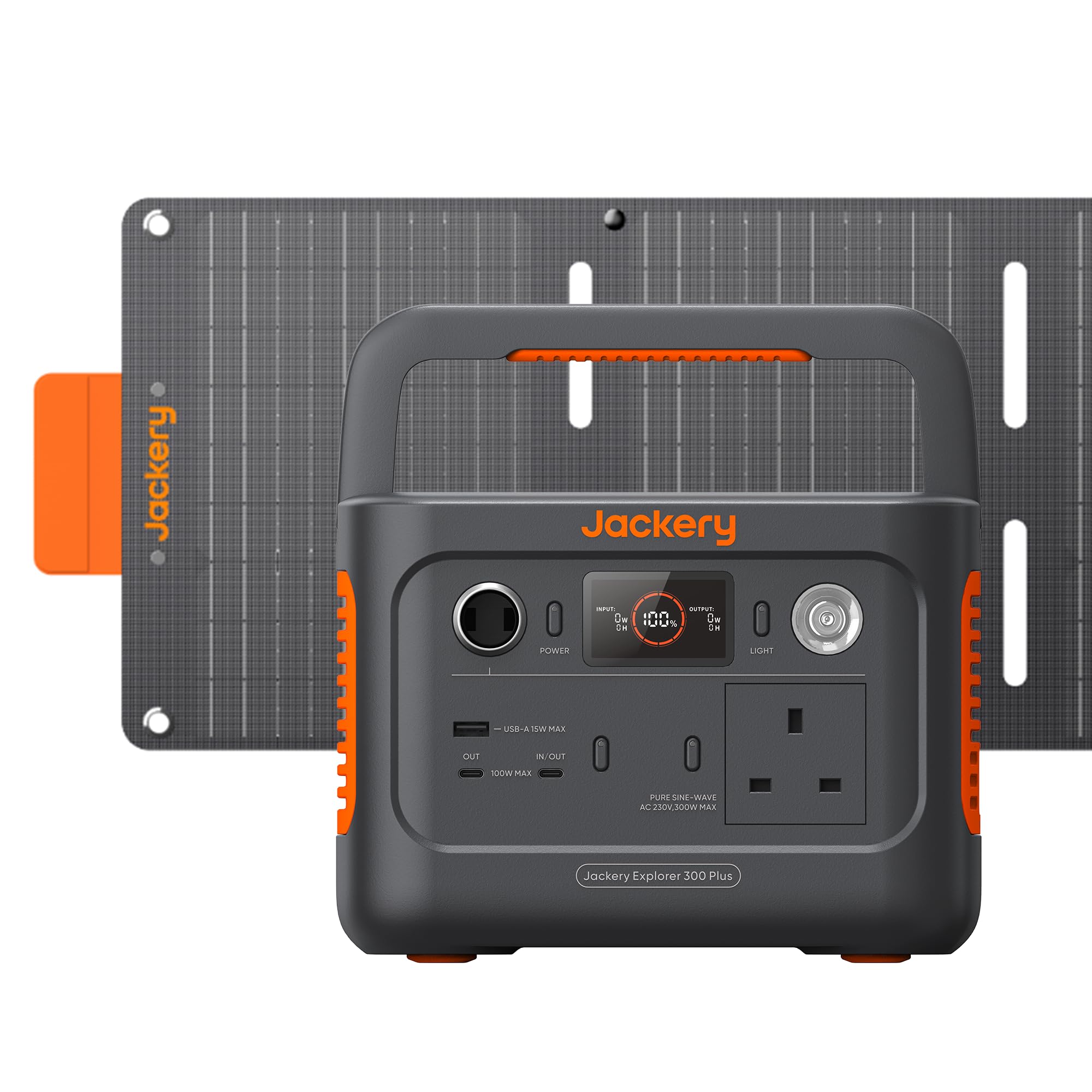
Jackery Solar Generator 300 Plus 40W Mini, 288Wh Portable power station with 40W Book-sized Solar Panel, LiFePO4 Battery 300W Output for Outdoors RV Camping Emergencies


| Capacity: | 288Wh |
| Weight: | 3.75KG+1.2KG |
| Output Power: | 300W |
| Battery Type: | LiFePO4 |
| Dimensions: | 23 x 15.5 x 16.7 cm |
| 1 x AC Output: | 230V~50Hz, 1.31A, 300W Rated, 600W Surge peak |
| 1 x USB-A Output: | 15W Max 5V⎓3A |
| 2 x USB-C Outputs: | 100W Max in total, 5V/9V/12V/15V=3A, 20V=5A |
| Car Port: | 12V⎓10A |
| Charge Temperature: | 0~45°C (32~113℉) |
COMPARISON
 Solar Generator 300 Plus |  Explorer 300 Plus |  Explorer 1000 Plus |  Solar Generator 1000 Plus |  Explorer 1000 Pro |  Explorer 1500 Pro | |
| Capacity | 288Wh | 288Wh | 1264Wh | 1264Wh | 1002Wh | 1512Wh |
| Output Wattage | 300W | 300W | 2000W | 2000W | 1000W | 1800W |
| Maximum Expandable Capacity | / | / | 5KWh | 5KWh | / | / |
| Wall Outlet Full Recharge Time | 2Hrs | 2Hrs | 1.7Hrs | 1.7Hrs | 1.8Hrs | 2Hrs |
| Solar Panel Full Recharge Time | 9.5Hrs (1x40W solar panel) | 4Hrs (1x100W solar panel) | 2Hrs (4x200W solar panel) | 9Hrs (2x100W solar panel) | 1.8Hrs (4x200W solar panel) | 2Hrs (6x200W solar panel) |
| Net Weight | 3.75KG+1.2KG | 3.75KG | 14.5KG | 14.5KG+2×4.68KG | 11.5KG | 17KG |
| APP | YES | YES | YES | YES | NO | NO |
| Dimensions | 23 x 15.5 x 16.7 cm | 23 x 15.5 x 16.7 cm | 35.6 x 26 x 28.3 cm | 35.6 x 26 x 28.3 cm | 34*26*25.6 cm | 38.4*26.9*30.78 cm |
| Weight: | 3.75 kg |
| Dimensions: | 23 x 16 x 17 cm; 3.75 Kilograms |
| Model: | JSG-0304B |
| Manufacture: | Jackery |
| Dimensions: | 23 x 16 x 17 cm; 3.75 Kilograms |
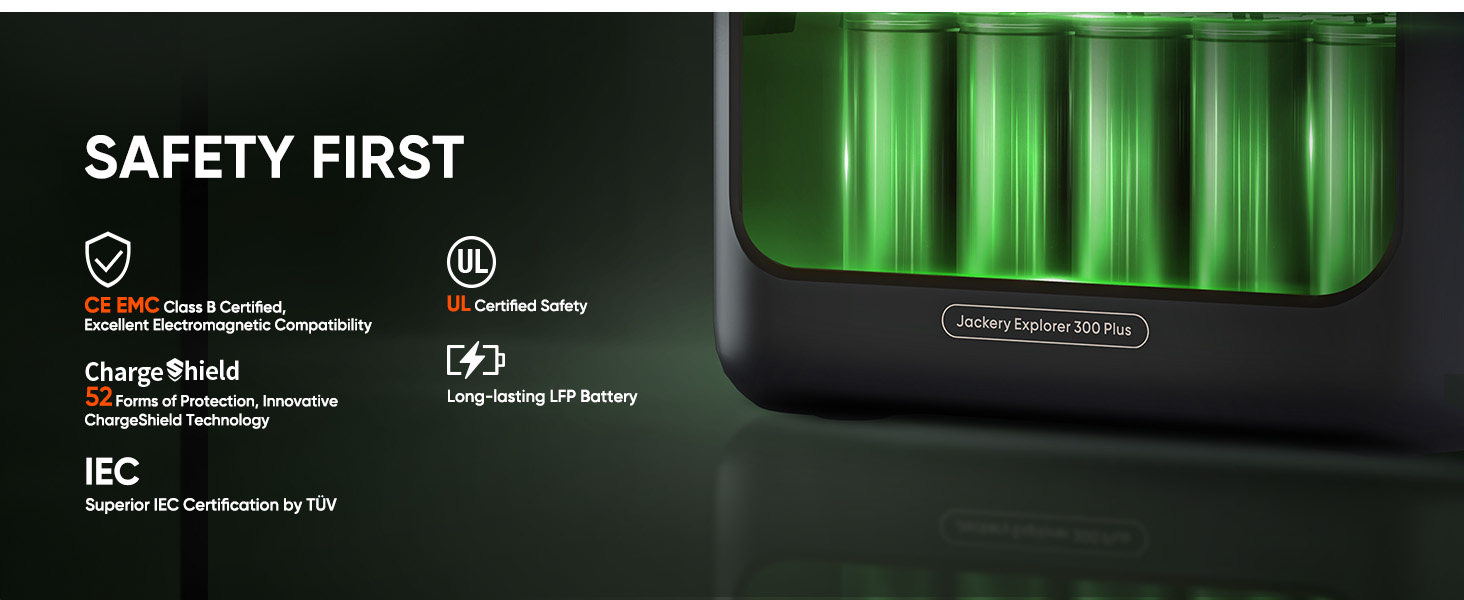
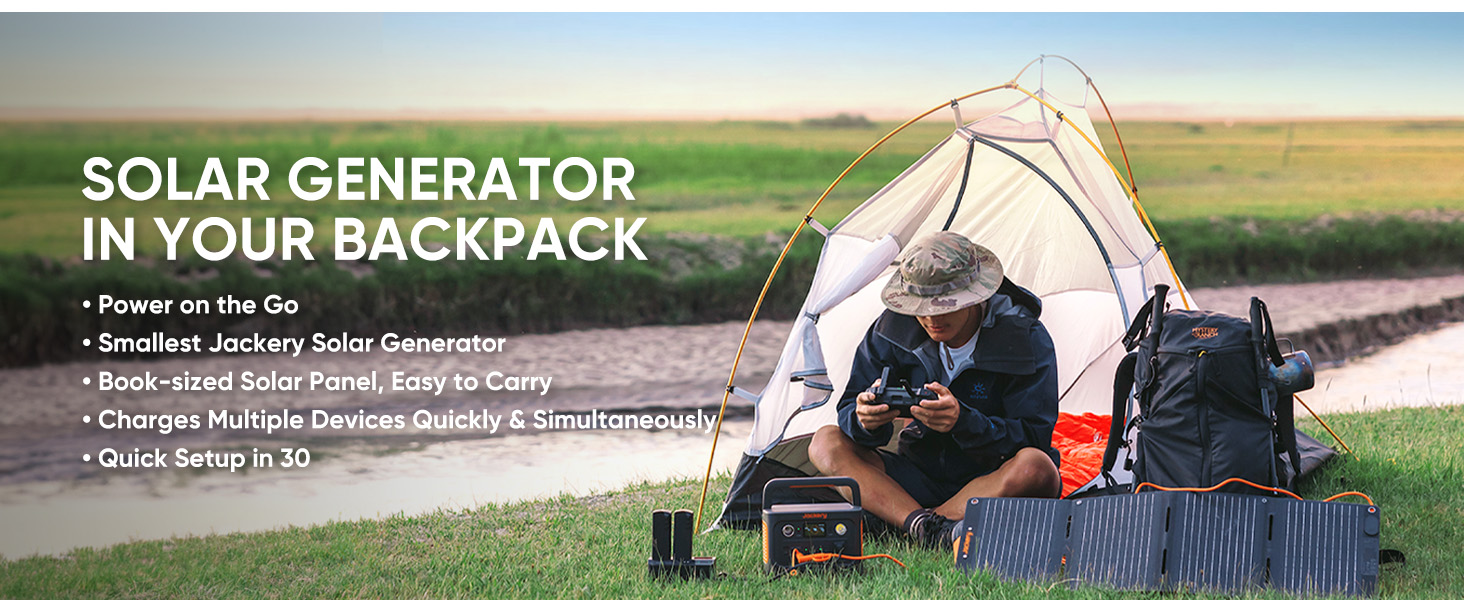
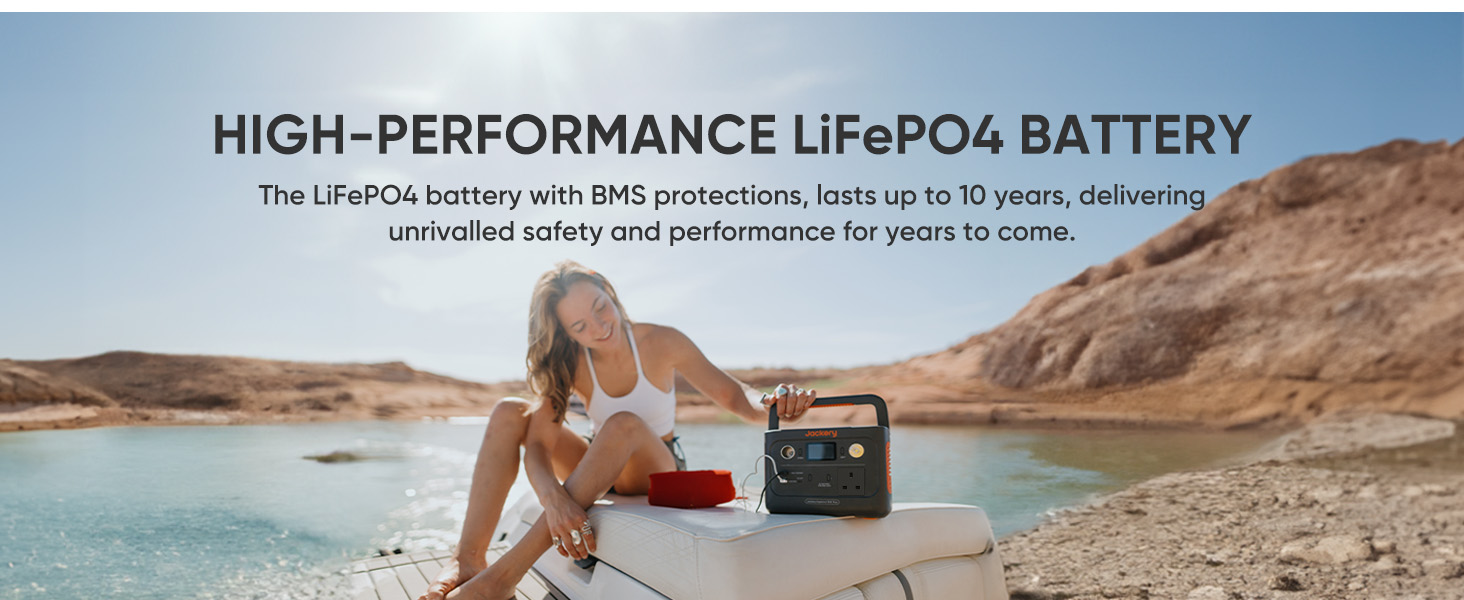
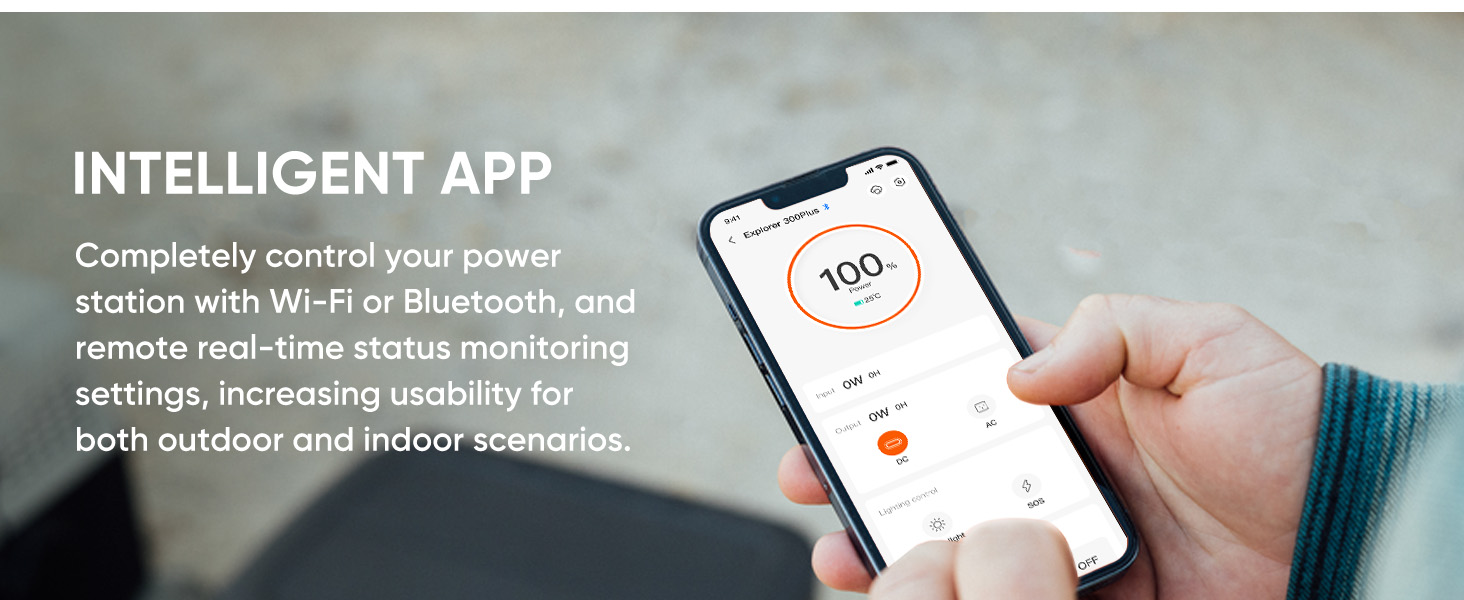

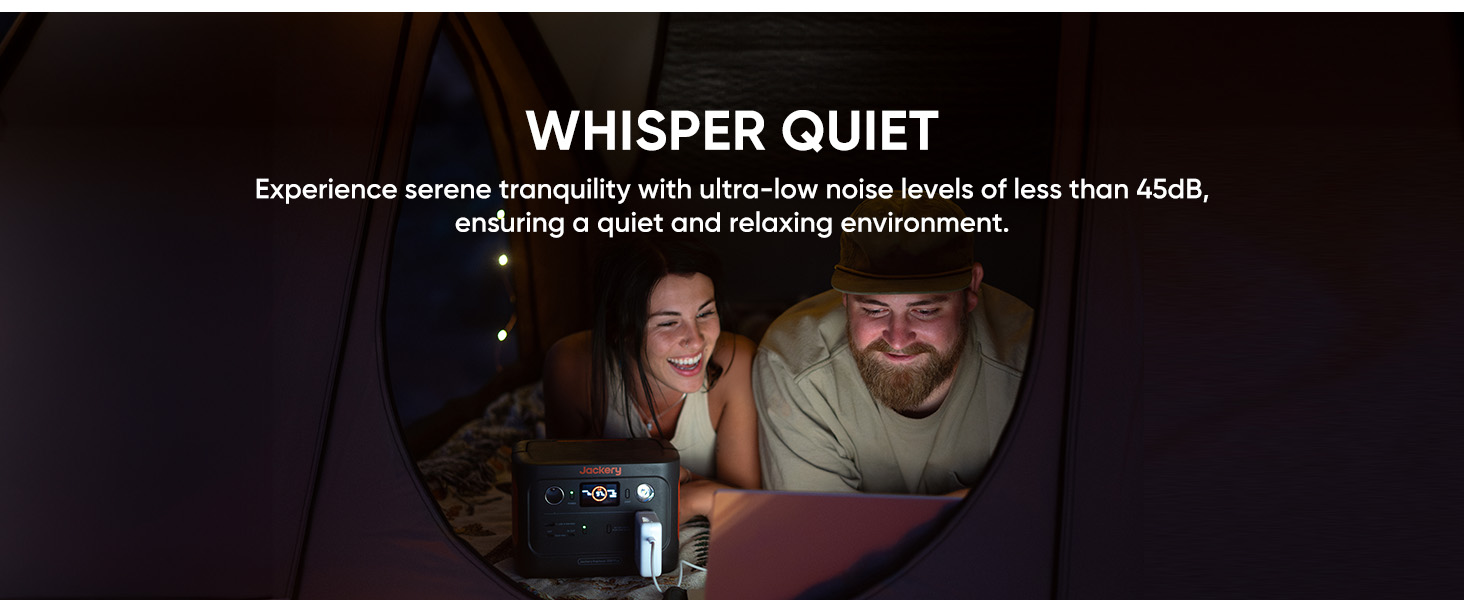

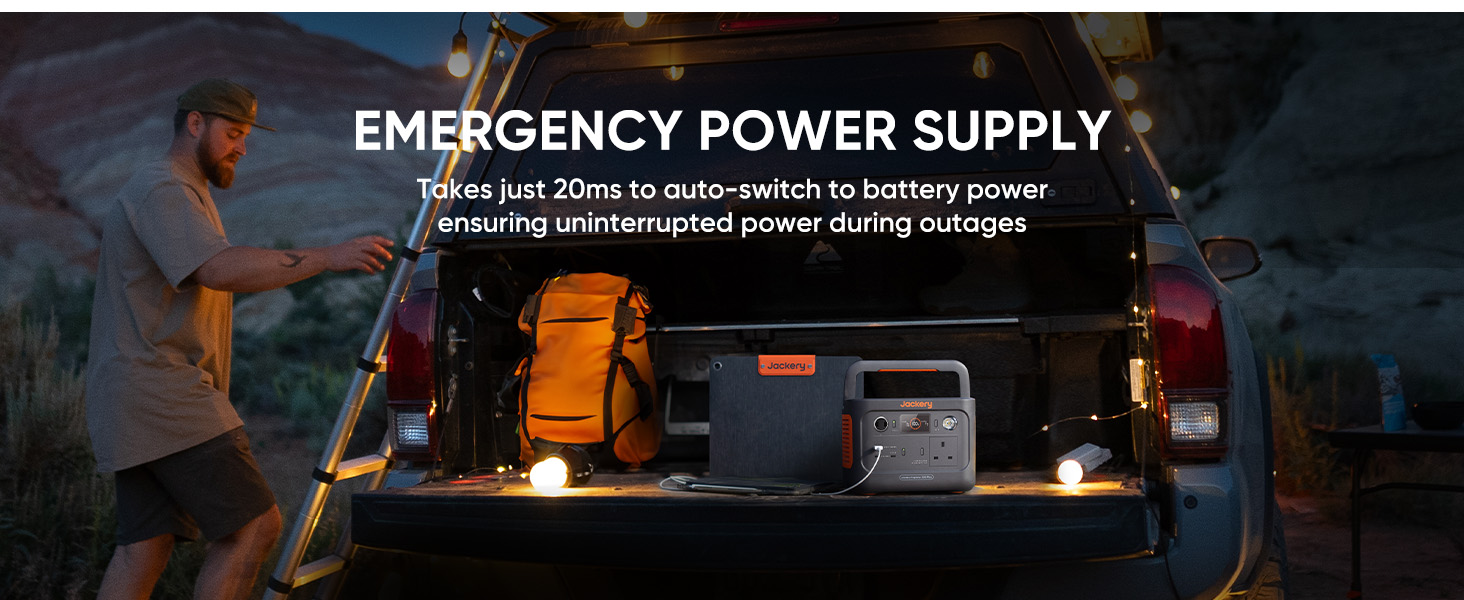
I tested this device one night operating my CPAP machine. I left it set as normal with heated cord on and humidifier on. I had hoped for 8 hours, got 6. I will test it again sometime with heated tube and humidifier turned off to see what it does.
When we stopped for the night at a hotel, we would plug the Jackery in on the nightstand (there’s usually only one AC outlet on a lamp) and plug all our phones/ipads and use the AC outlet for C-PAP. Just make sure it’s set to 12h or 24H for C-PAP or you will be gasping in the night as it only draws 35W(AC outlet) and the Jackery will shut off.
Charging: Charges fast, usually shows 208W or higher. When charging iPads AND charging the Jackery, the wattage is higher. Usually 250w, so I’m guessing this is the “pass through” charging for the devices plugged into the Jackery and the battery charger for the Jackery. If you are traveling, plugging it in at a Starbucks/fast food restaurant for half an hour or so will take you from 25% to 70%.
Solar charging is fiddley using the adapters and the in/out USB-C port. 100W panel seems throttled to 45W when charging. I wish it had a proper 8040 plug or Anderson plug for solar input. When solar charging, you lose one of the USB-C ports. Not great, needs more ports.
The app works OK to control the AC/DC/light, but you can’t turn the main Jackery Power ON or OFF. You have to physically push the power button on the Jackery, then the app will work.
I have a 300W/600W mini Ramen cooker. When set to 300W, it draws 322W (see picture) and the Jackery cuts off after 45 seconds or so. So the 300W inverter doesn’t have any wiggle room, 300W, that’s it!!
The display is bright and easy to read/figure out. I find it to be very useful, decently portable and so farwell built.
Brilliant bit of ki
I was going save it if I ever did Security again and just being in my car to charge all my electronics but still don’t have a job yet but it came handy as an extra outlet since I have so many in my room and need one for a fan and a mini PC and so far for the fan it only takes 10w out while using it so for almost a whole day I get down to 40 percent of battery which is not that bad. I can check it on the app and turn on the AC power to recharge it through just the app it’s a good feature. I really need to try this outdoors since just powering a fan for 24 hours at 10w is not seeing the full capacity but I do recommend it or just get the more powerful battery since 10w can drain to 40 percent in a day.
I’ve used this thing to powered a PS4 + a portable monitor (amazon) for about an hour worth of gaming and it used up about (40-45%) , I was so surprised for being how small!
This is a perfect size for car camping without a ton of electronics or machines I need plugged in. Anticipating using this with a blow-up mattress adapter, my CPAP and any phones/fans/speakers we need charged.
Perfect, the newer, longer lasting LiPo battery is also a big plus. No issues with Bluetooth or WiFi connection and it’s cool to see the charging progress on the Jackery app.
My first night I got it I tested it out at home. Charged the unit up and plugged my CPAP into the AC inverter with my machine running as I would normally use it at home… The battery only lasted about 5 hours any my wife complained about a slight fan noise (from the inverter) before giving out. I plugged the Jakery in to charge and power pass though worked great until the unit was charged then it stopped and switched back over to battery mode and the battery ran down again.
Night two I plugged in a DC adaptor I purchased for my CPAP and found I could almost make it though a night. The Jackery lasted about 7hrs before the battery was dead. Proving the DC converter was more efficient.
My 3rd night I ran the machine with the DC power converter turning off the humidifier, heated tube, and (something else). This time the battery was only at 87% after 7.5hrs of sleep. Note this was my first time turning all the comfort features off on the CPAP and it really was not that big of a deal. Yes nice to have but not musts for me.
Having proven itself I took it camping with us this weekend and it worked great. I used my CPAP both nights, charged my phone and watch off it while still having about 60% power left. I am pretty sure it will make it the full week through summer camp without charging and if it does need charged it seems I can charge to 100% in about 2hrs on AC if needed. Yes I could buy the solar panels but it seems like one more thing to hope does not get broken and most of the time our camp sites are in the woods with a fair amount of shade. I’m wondering how the battery will hold up during winter camping and I’m sure as we start training and doing more backpacking trips I’l need something smaller and lighter but for now this fits my requirements. Looking forward to more well rested nights in the woods and while at anchor on our boat.
That comes to about 6% of battery per hour for my CPAP. Thus it will run my CPAP for around 16.67 hours. Call it 16 hours to allow a bit of buffer.
That’s two nights of long sleep, or possibly up to 3 nights if I use it for shorter periods.
I have a Resmed AirCurve 10 S (actually a BIPAP, not a CPAP). I turned off the heating and other climate controls using the device’s settings.
The reason I gave this 4 stars instead of 5 was because I found the Jackery documentation pretty light and hard to understand.
* glad to have the LiFePO chemistry for frequent and daily use, and less concern about using from 100-0% discharge.
* huge upgrade – charges very quickly with the provided AC cable up to 215W input, and close to 100W input with USBC charging.
* handles 300W AC loads without issue, but not able to surge much above (medium small vacuum for example shuts off the inverter).
Con – * AC inverter is much less efficient than the 290 Explorer, and the accuracy has dropped significantly; a similar small load on AC drains faster on this new device and the wattage shown is lower than actual.
* charges well with Jackery 100 Solar saga using the provided DC barrel to USB-C adapter.
* DC outputs are efficient and work very well for laptops and any USB or USBC electronics.
Overall, happy with the purchase and using almost daily, while limiting AC inverter usage to when needed (see Con above).
There is no power brick to lug around. The AC charger (included) plugs right into the wall and is the same standard AC cord that my computers have used for decades. I don’t know how many amps this thing pulls so I will try not to lose the cord. It charges at 199 watts from a standard wall outlet.
It’s a little bit bigger, taller, wider, thicker and heavier than the 300, but not by much.
The two 100 watt USB C outlets are perfect for my needs and the AC outlet works.
There is no 12V car charger included. I’m using the 12V out from the 300 and plugging it into the included USB C adapter. It’s charging at about 55 watts from the 300 and the cigarette lighter charger in my car but only if I use the cable from the older 300 model, which I have to return.
I cannot get it to charge with a USB C cable plugged into a an AC adapter the way I did with the earlier model. My iPad charger and my phone charger do not charge this thing. I have a Samsung charger which puts out 45 watts, it does not charge the Jackery Explorer 300 plus at all. All of these chargers work with the Explorer 300. My new laptop charger does charge it at about 64 watts. I don’t know if it can charge with both wall current and USB C at the same time and will update this when I find out, that could cut charging time in half, the way it did on the previous model.
No 12V DC charger is included. There is no way to charge this with my car without the 12V DC cable from the Jackery Explorer 300. The 300 plus should not have shipped without this cable and the company is out of stock of 12V DC cable until next month. If you need to charge it with your car you will need to get creative. I was allowed to keep the cable from the 300 for $16, so it’s alright.
If they had included that absolutely essential cable I would have rated this 5 stars. It comes in handy.